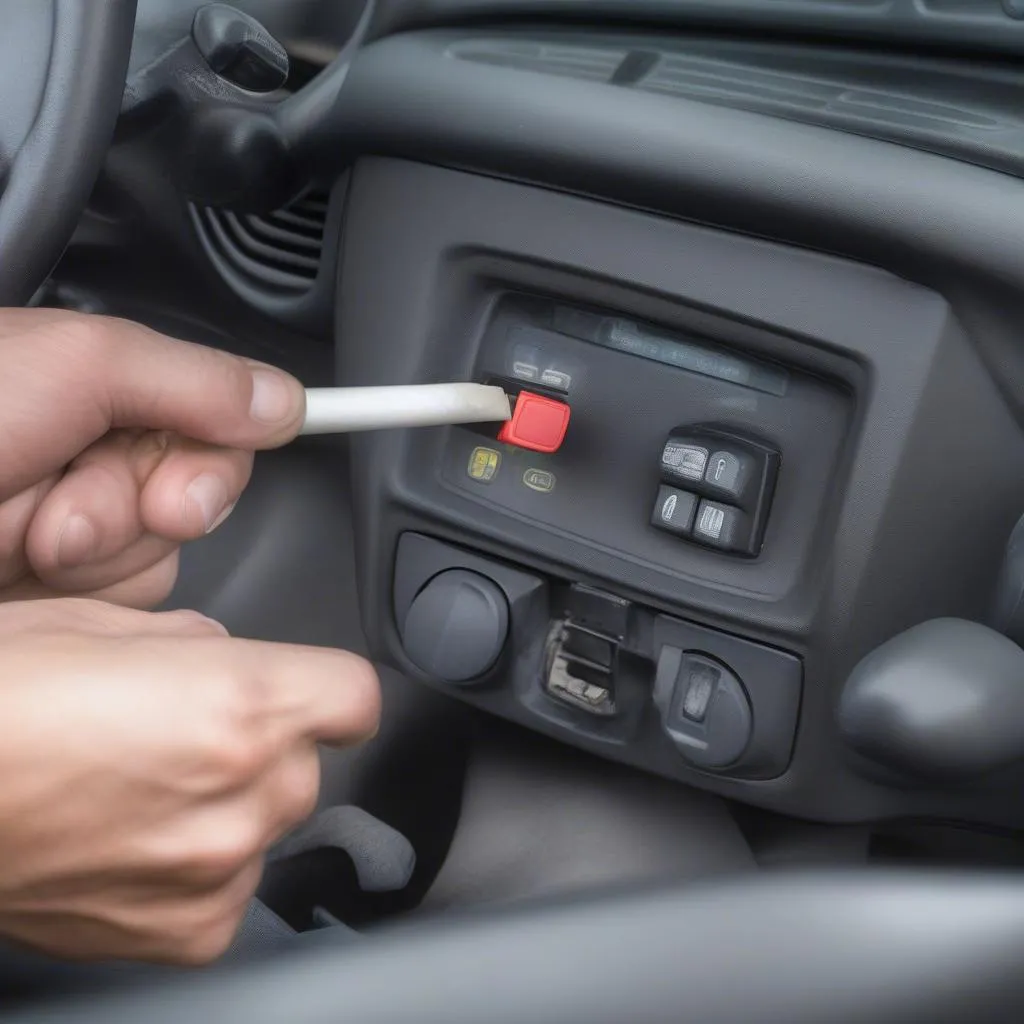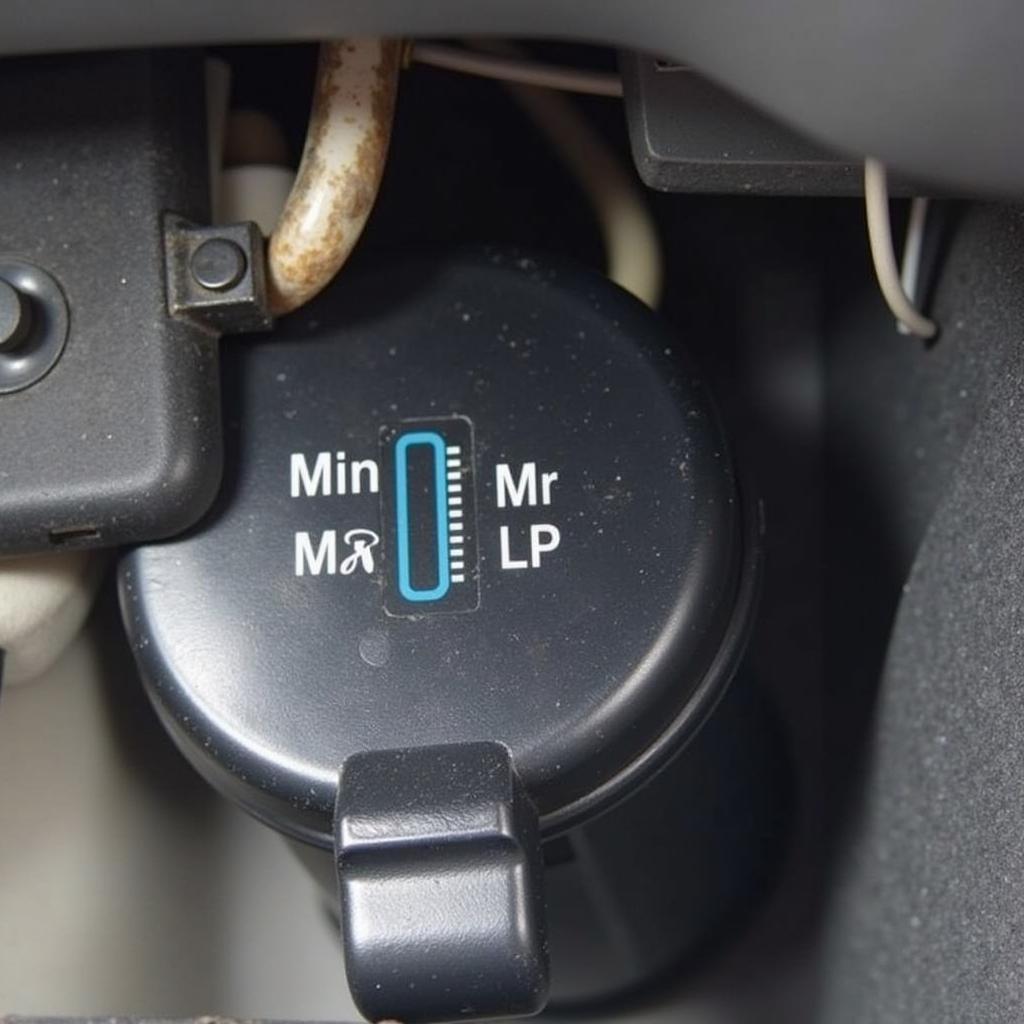The brake warning light on your 2007 Ford Ranger is a crucial safety feature, illuminating on your dashboard when the vehicle’s onboard computer detects an issue within the braking system. While a simple glitch can sometimes trigger the light, more often than not, it signals a problem requiring attention. Ignoring this warning could lead to brake failure, putting you and others at risk. This comprehensive guide delves into the common causes of a lit brake warning light on a 2007 Ford Ranger and outlines steps you can take to diagnose and resolve the issue.
Understanding Your Ford Ranger’s Brake System
Before diving into troubleshooting, it’s helpful to understand the basics of your truck’s braking system. The 2007 Ford Ranger typically employs a hydraulic system that uses brake fluid to transmit force from the brake pedal to the wheels, slowing or stopping the vehicle. Key components include:
- Brake pedal: Initiates the braking action.
- Brake booster: Amplifies the force applied to the brake pedal.
- Master cylinder: Converts pedal pressure into hydraulic pressure.
- Brake lines: Carry pressurized brake fluid to the wheels.
- Brake calipers (front) and wheel cylinders (rear): House pistons that push brake pads against the rotors (front) or brake shoes against the drums (rear) to create friction and slow the wheels.
Common Causes of a Brake Warning Light
A variety of issues can trigger the brake warning light on your 2007 Ford Ranger. Here are some of the most common culprits:
1. Low Brake Fluid Level
One of the most frequent causes is low brake fluid. As brake pads wear down, the brake fluid level in the master cylinder naturally decreases. If the fluid level drops significantly, the brake warning light will illuminate.
Troubleshooting Tip: Park your truck on a level surface and visually inspect the brake fluid level in the master cylinder reservoir. The reservoir is usually a translucent plastic container located near the firewall on the driver’s side. Check if the fluid level is below the “MIN” or “LOW” mark.
2. Worn Brake Pads
Brake pads are designed to wear down over time. When they become excessively thin, the brake warning light will activate.
Troubleshooting Tip: Listen for a high-pitched squealing or screeching noise when applying the brakes, a common sign of worn brake pads.
3. Faulty Brake Light Switch
The brake light switch is responsible for activating your brake lights when you press the brake pedal. A malfunctioning switch can also trigger the brake warning light.
Troubleshooting Tip: Check if your brake lights are working properly. If the brake lights don’t illuminate when the brake pedal is pressed, the brake light switch might be the culprit.
4. ABS Issue
The Anti-lock Braking System (ABS) prevents wheel lockup during hard braking. If the ABS module detects a problem, it can illuminate the brake warning light.
Troubleshooting Tip: Pay attention to any unusual noises or vibrations when braking, especially during ABS activation. A grinding noise or pulsating brake pedal can indicate an ABS issue.
5. Other Potential Causes
- Leaking brake lines or hoses: Inspect for any signs of brake fluid leaks near the wheels, brake lines, or under the vehicle.
- Faulty master cylinder: A leaking or malfunctioning master cylinder can lead to a loss of brake pressure.
- Air in the brake lines: Air in the brake lines can make the brake pedal feel spongy or soft.
- Electrical issues: A short circuit or wiring problem in the brake system can trigger the warning light.
What to Do When Your Brake Warning Light Comes On
1. Don’t Panic: Remain calm and safely pull over to a safe location as soon as possible.
2. Check the Brake Fluid: Inspect the brake fluid level in the master cylinder reservoir. If it’s low, adding brake fluid might temporarily address the issue, but it’s crucial to have the underlying cause diagnosed and repaired.
3. Listen for Noises: Pay attention to any unusual noises when applying the brakes, such as grinding, screeching, or clicking.
4. Check Brake Light Operation: Verify if the brake lights are working.
5. Seek Professional Help: If you’re unsure about the cause or how to fix it, it’s essential to have a qualified mechanic diagnose and repair the problem.
Remote Diagnostics and Software Solutions for Your Ford Ranger
In today’s technologically advanced world, remote diagnostics and software solutions have emerged as valuable tools for addressing automotive issues, including brake system problems.
Here’s how remote services can help:
- Remote Diagnostics: Skilled technicians can remotely access your vehicle’s onboard computer system to retrieve diagnostic trouble codes (DTCs) and other valuable data, providing insights into the root cause of the brake warning light.
- Software Updates and Programming: In some cases, a software update or reprogramming of the ABS module or other electronic components related to the braking system might be necessary. This can often be performed remotely by certified technicians.
Benefits of Remote Services:
- Convenience: Receive expert assistance from the comfort of your home or location.
- Faster Diagnosis: Remote diagnostics can expedite the troubleshooting process, saving you time and potential frustration.
- Cost Savings: In certain situations, remote diagnostics can help avoid unnecessary trips to the mechanic and potentially identify minor issues before they escalate.
“Remote diagnostics is becoming increasingly prevalent in the automotive industry,” says John Smith, a certified automotive technician with over 20 years of experience. “It allows us to efficiently diagnose and address issues, even for vehicles located far from our service center.”
Conclusion
A glowing brake warning light on your 2007 Ford Ranger should never be ignored. Understanding the common causes and taking prompt action can help ensure your safety and prevent further damage to your vehicle’s braking system. If you’re uncertain about the cause of the problem, seeking professional help from a qualified mechanic is crucial. Additionally, exploring remote diagnostics and software solutions can provide convenient and efficient options for resolving brake-related issues.


